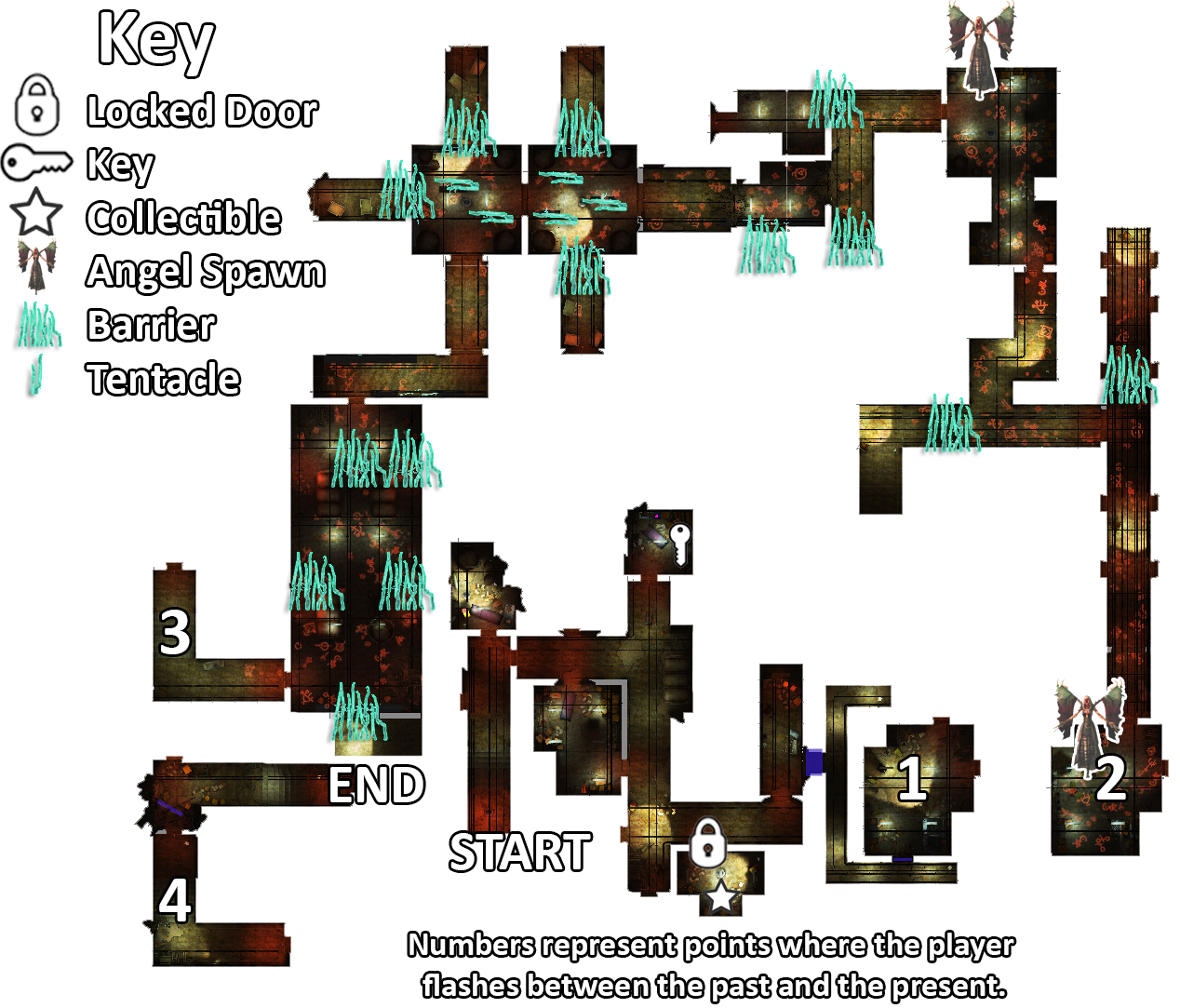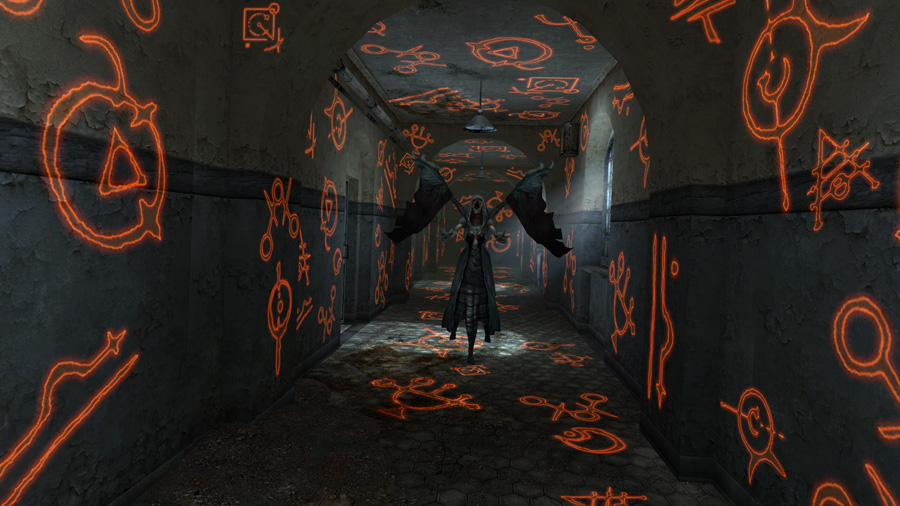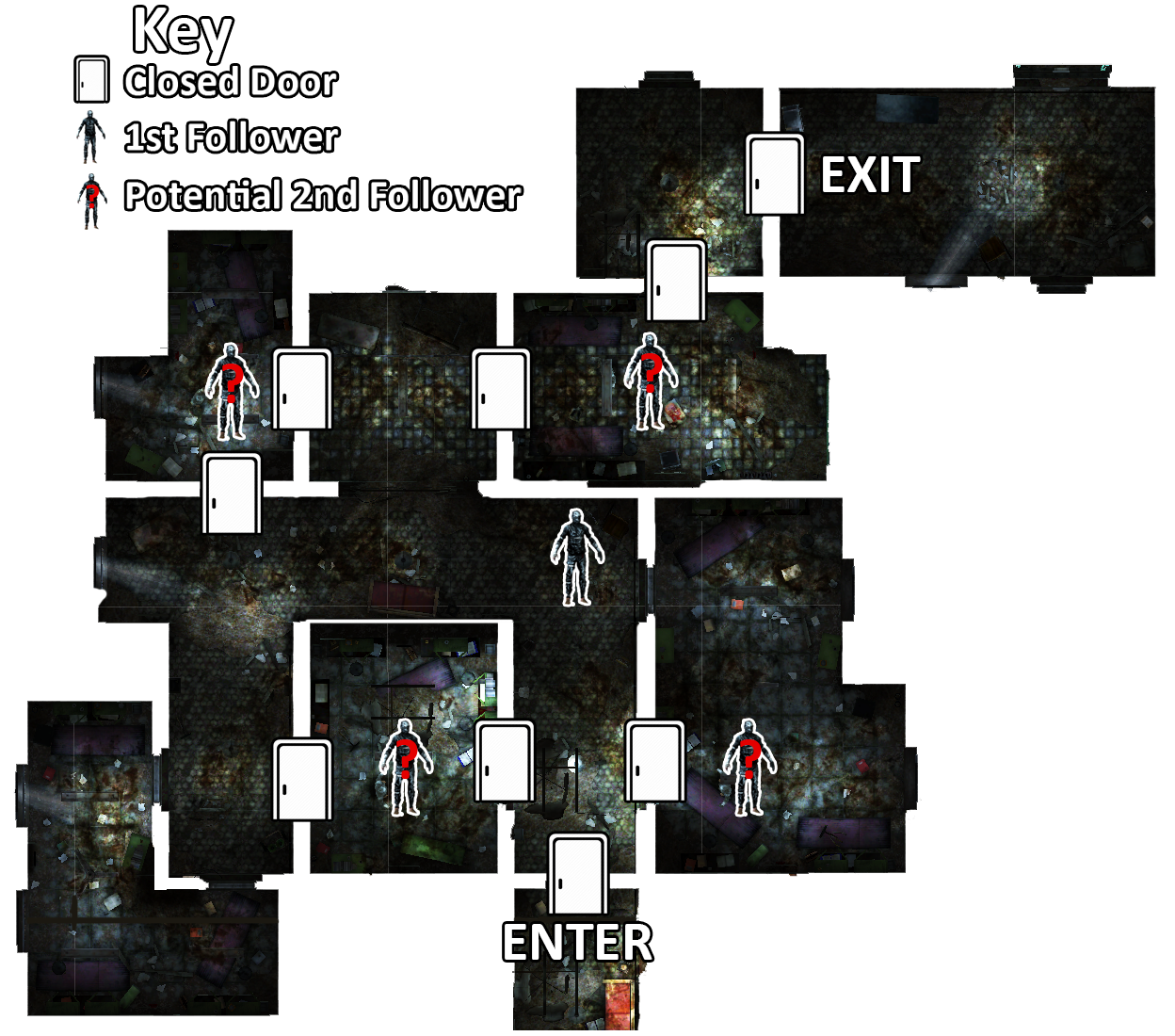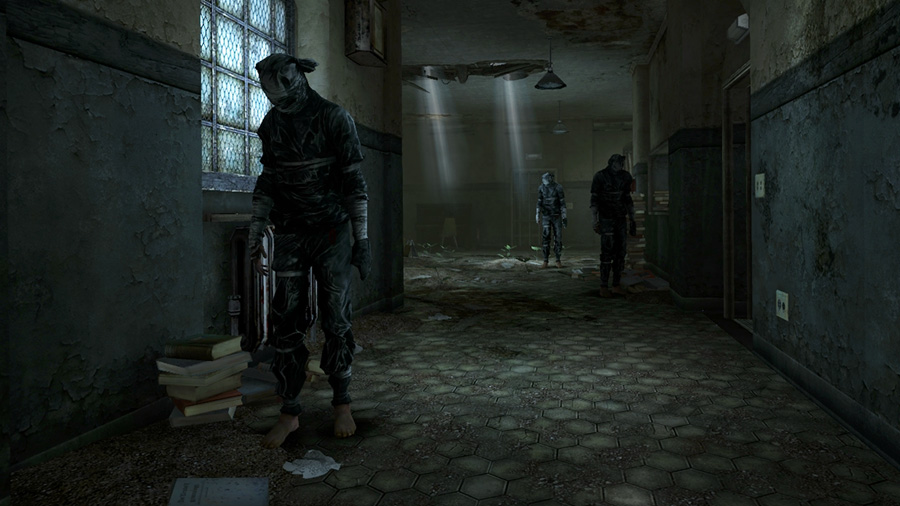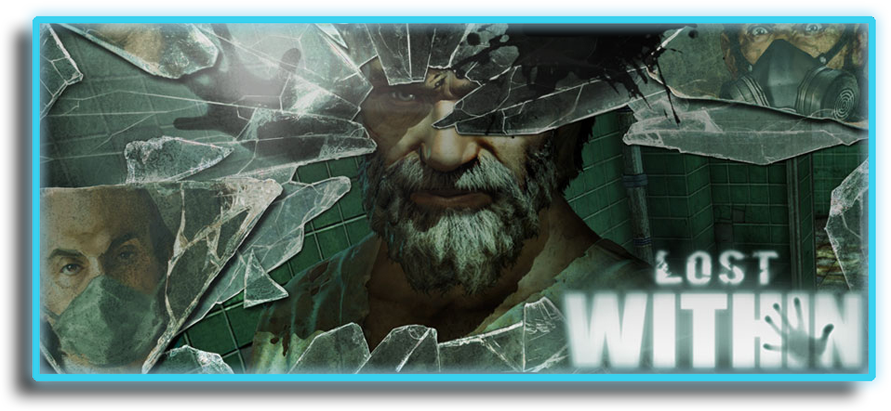
Development Info
Features
Genre: Survival Horror
Players: 1
Engine: Unity
Platform: iOS and Fire Phone
Time on Team: June 2014 – January 2015
- An intricate psychological narrative told in three acts
- Multiple enemy types that the player can avoid or confront
- Item collecting and crafting
- 6-8 hours of gameplay
Game Overview
Survive a haunted asylum and its monstrous inhabitants. Confront a legendary killer who prowls the abandoned wards. Scavenge and create makeshift weapons or conserve your resources and employ stealth tactics to sneak past the lurking horrors. When all else fails, run for your life or find a place to hide. To escape, you must uncover the asylum’s dark mystery: the shattering secret that led to its condemnation. There are many doors, but there is only one way out.
Responsibilities
- Scripted and debugged various in-game events, AI encounters, and cinematic sequences across all 28 levels in C#
- Designed and implemented 4 encounters and blocked out 5 levels in the final act of the game
- Resolved the most bugs on the team
- Worked with artists to implement and polish cameras and animations in cinematic sequences
- Helped edit and implement sound effects and voice-over
- Implemented occlusion culling across all levels and helped optimize performance
- Debugged and optimized navigation meshes for various levels
- Provided voice acting for a major character (The Man in the Water) and several supporting characters
Level Design Sample
Though most of my early tasks were focused on technical work, my duties expanded to include level design and blockouts as Lost Within approached its Alpha milestone. As a result, I got to “own” several levels of the game by designing, blocking out and scripting them by myself, so long as I adhered to the game’s narrative and dialog requirements. My favorite of these levels involves Lost Within‘s final monster encounter, featuring the game’s apex predator – the Angel – in a frantic chase that was inspired by the escape sequences at the end of Metroid and Halo games.
Unlike many games, even in the survival horror genre, Lost Within did not possess a true boss fight. The same four enemy types were reused throughout the game to antagonize the player. Among them, the Angel was the most dangerous. As it was impervious to damage, could move through walls and could sense the player’s location, the player had to escape the Angel’s territory in lieu of defeating it. Given this status, both the game’s narrative and overall design called for one final, big chase with it to serve as Lost Within‘s climactic gameplay moment. However, as the player had seen the Angel multiple times before this point, making the encounter feel like the game’s climax was not going to be as simple as making the chase last a little longer. If it just felt like a slightly bigger version of the previous Angel chases, it would leave Lost Within‘s gameplay ending on a flat note.
That said, it was clear that making the chase longer was a necessary first step. Usually, the area the player had to escape from was pretty small, and Angel chases lasted a few seconds at most. While scary, these moments weren’t grandiose enough to cap off the entire game. Everyone knew this in theory, but I soon discovered just how big the chase would have to be in practice. With the player moving at a constant sprint, they covered ground rapidly, and making the chase feel substantial required much more time than was anticipated. As a result, the level ended up being the largest in the game, and I had to script in special optimization functions to make sure it ran flawlessly.
The real key to making the chase feel climactic, though, was the addition of an extra gameplay element. At several points in the game, the player encounters supernatural barriers of glowing tentacles that burst from the ground and impede their progress. However, they always appeared outside of combat and functioned like a locked door. The player would just need to find an item to remove them, and they’d be on their way. By tweaking their script, I was able to use these barriers as hazards to impede the player as they were running instead. This not only made the encounter more unique and deadly, but it allowed me to smoothly ramp up the difficulty as the chase went on. Barriers came with less warning, the player was forced into tighter turns, and they had more potential routes that could be blocked off the further they ran. By the end, the player felt like they had overcome an intense struggle with the Angel, one that felt like an appropriately thrilling and spectacular climax to the game.
You can see the finished chase in the video below. Please note that this footage was taken from the Unity editor.
Encounter Design Sample
Another level I designed involved the final encounter with one of my favorite enemies – The Follower. Inspired by Doctor Who‘s Weeping Angels, a Follower only moves when the player isn’t looking or has been looking at it for a sustained period. Using scripting in combination with the area’s layout, I was able to highlight and build upon the Follower’s abilities to give it a fitting send-off.
The Follower’s inability to move normally when the player looks at them lends them to creepy stand offs, and testing found that placing one right where the player needs to go was an effective way to use them. Even though the player knows the Follower can’t move right away, there’s an instinctual need to get out of danger and turn away from the monster. It’s an unsettling, tense feeling. In this scenario, I play into this need by placing closed doors immediately to the left and right of the player. Most players are relieved to see those, and will immediately open one of the doors. However, no matter which door they open, they’ll find a second Follower right in their path. Even if they run past the first Follower they must open one of the doors, and through scripting, the first door they open will always have a second Follower behind it. Fortunately for players’ hearts, there cannot be a third.
Not only did this create a memorable, frightening moment, but it created a dynamic encounter than can play out multiple ways depending on which door the player opens second. That required me to think carefully about the space, and make sure there were always reasonable escape routes and paths for the player depending on where the second Follower appeared. The area went through many revisions during the blockout stage as I tested various scenarios. In the end, it ended up as a frightening and challenging encounter, but one that was overcome intuitively.
You can see two versions of how the encounter can play out in the video below. Please note that this footage was taken from the Unity editor.

